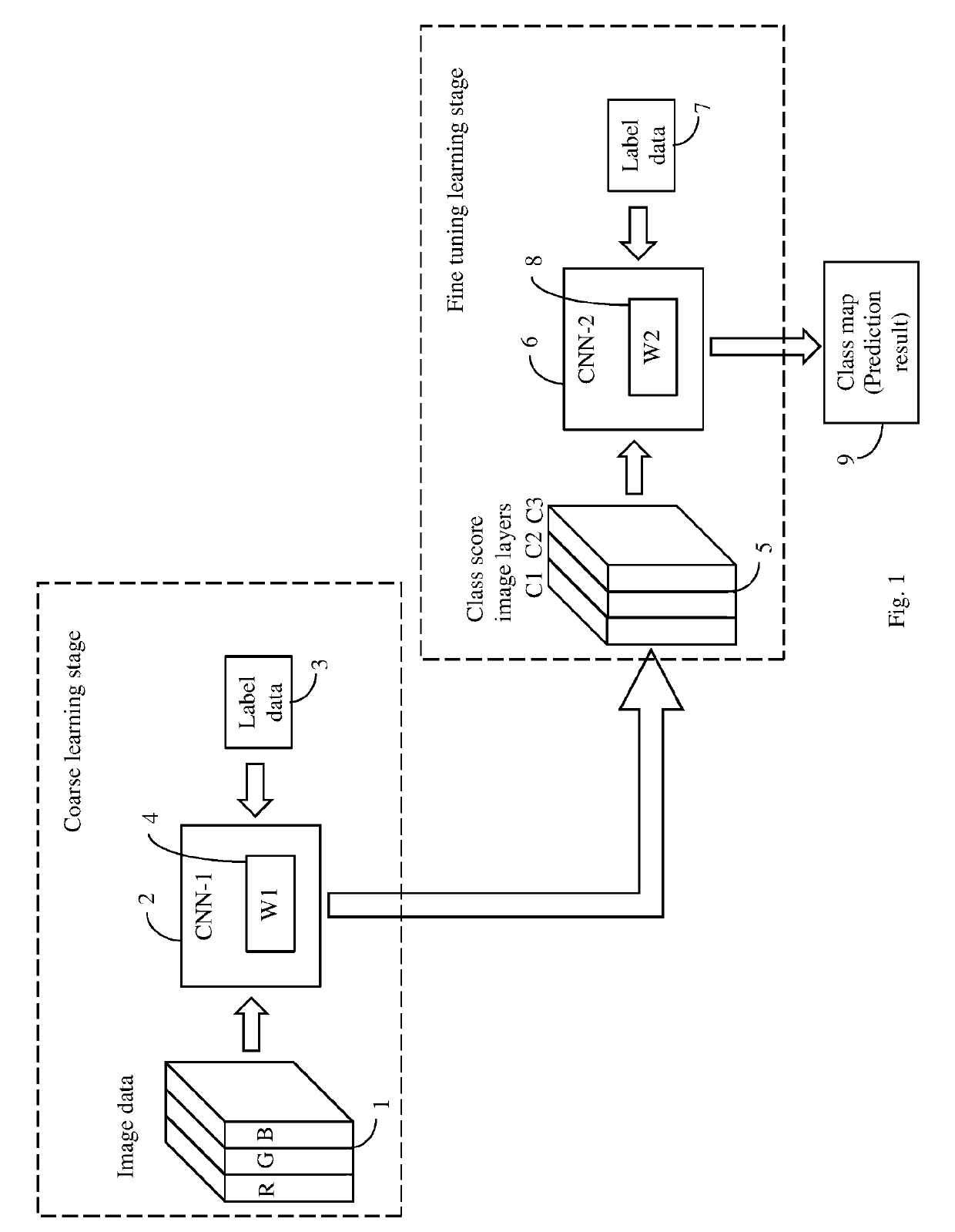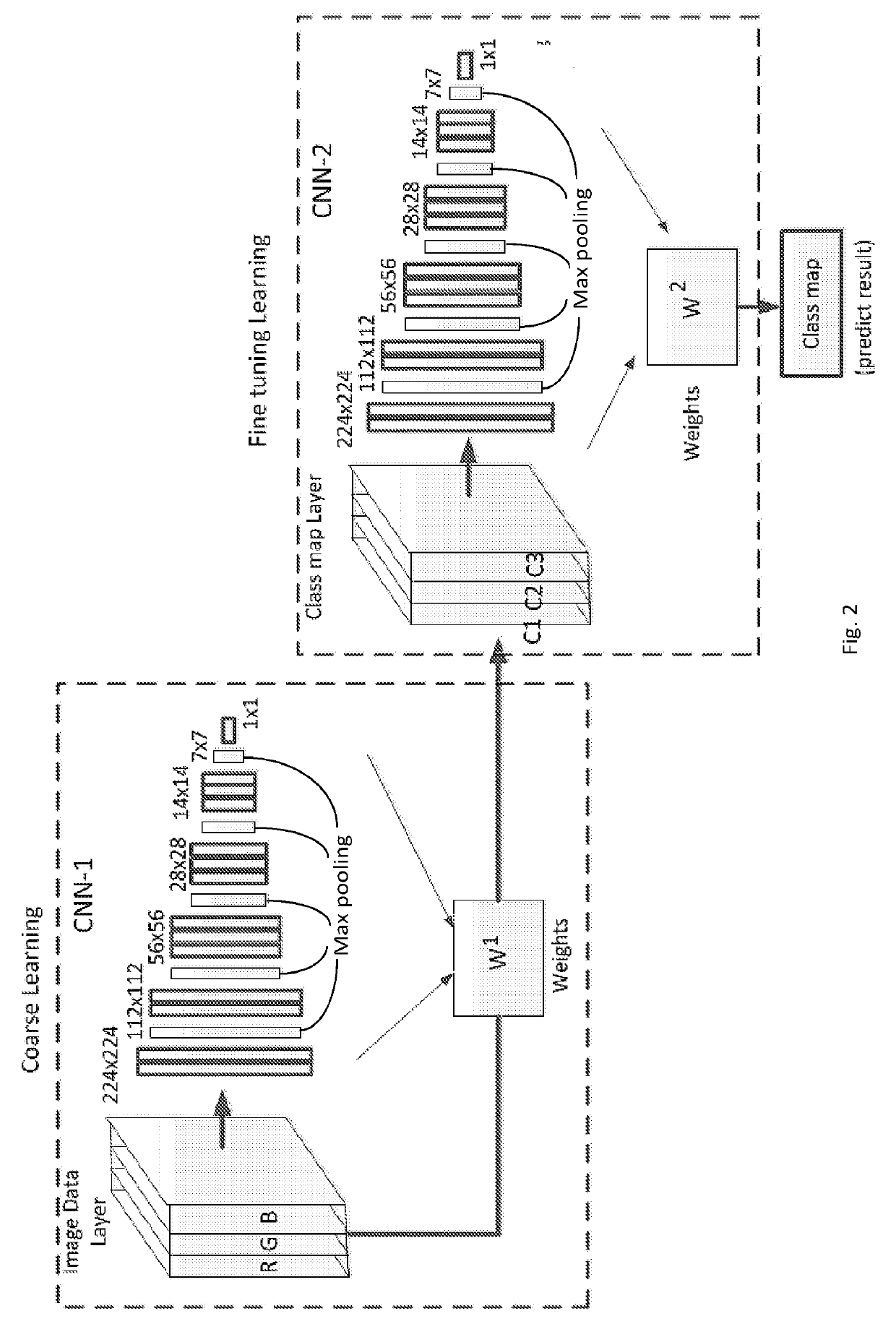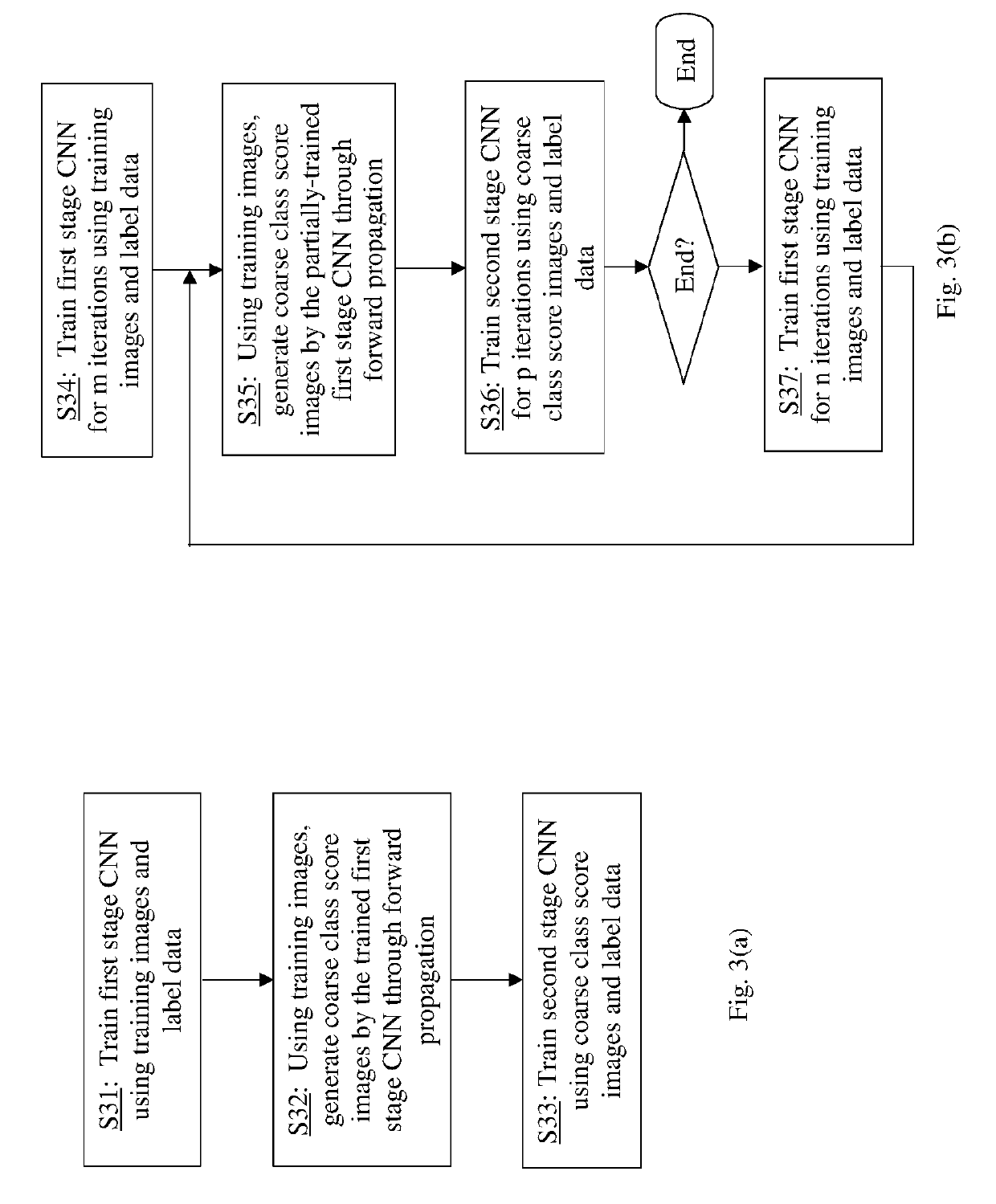Method and system for cell image segmentation using multi-stage convolutional neural networks
a convolutional neural network and cell image technology, applied in the field of artificial neural network technology, can solve the problems of high detection accuracy, small available training image dataset, and possible overlap of cells on images captured by microscopes
- Summary
- Abstract
- Description
- Claims
- Application Information
AI Technical Summary
Benefits of technology
Problems solved by technology
Method used
Image
Examples
Embodiment Construction
[0019]Embodiments of the present invention provides a multi-stage convolutional neural network (CNN) system which includes multiple individual CNNs arranged in series, where the prediction output of an earlier stage CNN is inputted to the next stage CNN as input image. The multiple CNNs are otherwise independent of each other. The system is designed in particular to handle cell images segmentation with the goal of increasing accuracy in particular in edge detection. A two-stage CNN system is described in the examples below, but the system may have other numbers of stages.
[0020]FIG. 1 schematically illustrates the architecture of a two-stage CNN system according to embodiments of the present invention, including a first stage convolutional neural network 2 (“CNN-1”) and a second stage convolutional neural network 6 (“CNN-2”). For convenience, in this two-stage system, the first stage is referred to as the “coarse learning” stage and the second stage is referred to as the “fine tuning...
PUM
 Login to View More
Login to View More Abstract
Description
Claims
Application Information
 Login to View More
Login to View More - R&D
- Intellectual Property
- Life Sciences
- Materials
- Tech Scout
- Unparalleled Data Quality
- Higher Quality Content
- 60% Fewer Hallucinations
Browse by: Latest US Patents, China's latest patents, Technical Efficacy Thesaurus, Application Domain, Technology Topic, Popular Technical Reports.
© 2025 PatSnap. All rights reserved.Legal|Privacy policy|Modern Slavery Act Transparency Statement|Sitemap|About US| Contact US: help@patsnap.com



